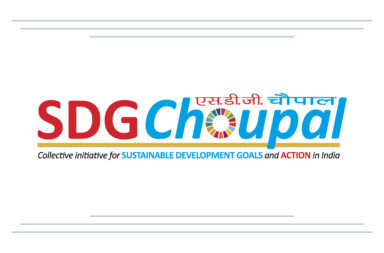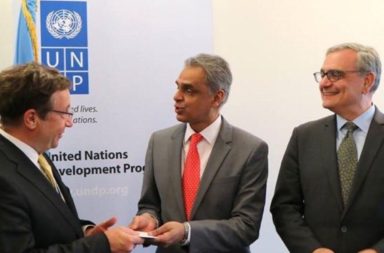The world population is increasing very fast and food supplies are not enough to fulfil the demand. This is the reason why hunger problem is one of the biggest problems in developing countries. To keep this thing in mind, the second goal among the 17 goals of SDG is chosen as ‘No Hunger.’
According to UNDP right now, our soils, freshwater, oceans, forests and biodiversity are being rapidly degraded. Climate change is putting even more pressure on the resources we depend on, increasing risks associated with disasters, such as droughts and floods. Many rural women and men can no longer make ends meet on their land, forcing them to migrate to cities in search of opportunities. Poor food security is also causing millions of children to be stunted or too short for the ages, due to severe malnutrition.
The SDGs aim to end all forms of hunger and malnutrition by 2030, making sure all people–especially children–have sufficient and nutritious food all year. This involves promoting sustainable agricultural, supporting small-scale farmers and equal access to land, technology and markets. It also requires international cooperation to ensure investment in infrastructure and technology to improve agricultural productivity.
Challenges ahead
According to data released by UN there there are still many challenges to achieve the goal of ‘No Hunger’ by 2030. Lets look into this video to understand the situation of hunger:
Hunger

- An estimated 821 million people were undernourished in 2017.
- The majority of the world’s hungry people live in developing countries, where 12.9 per cent of the population is undernourished.
- Sub-Saharan Africa remains the region with the highest prevalence of hunger, with the rate increasing from 20.7 per cent in 2014 to 23.2 per cent in 2017.
- In sub-Saharan Africa, the number of undernourished people increased from 195 million in 2014 to 237 million in 2017.
- Poor nutrition causes nearly half (45 per cent) of deaths in children under five – 3.1 million children each year.
- 149 million children under 5 years of age—22 per cent of the global under-5 population—were still chronically undernourished in 2018.
Food security
- Agriculture is the single largest employer in the world, providing livelihoods for 40 per cent of today’s global population. It is the largest source of income and jobs for poor rural households.
- 500 million small farms worldwide, most still rainfed, provide up to 80 per cent of food consumed in a large part of the developing world. Investing in smallholder women and men is an important way to increase food security and nutrition for the poorest, as well as food production for local and global markets.
- Since the 1900s, some 75 per cent of crop diversity has been lost from farmers’ fields. Better use of agricultural biodiversity can contribute to more nutritious diets, enhanced livelihoods for farming communities and more resilient and sustainable farming systems.
- If women farmers had the same access to resources as men, the number of hungry in the world could be reduced by up to 150 million.
- 840 million people have no access to electricity worldwide – most of whom live in rural areas of the developing world. Energy poverty in many regions is a fundamental barrier to reducing hunger and ensuring that the world can produce enough food to meet future demand.
Goals
The UN has made a strategy though, to achieve the target by following these steps:

- By 2030, end hunger and ensure access by all people, in particular the poor and people in vulnerable situations, including infants, to safe, nutritious and sufficient food all year round
- By 2030, end all forms of malnutrition, including achieving, by 2025, the internationally agreed targets on stunting and wasting in children under 5 years of age, and address the nutritional needs of adolescent girls, pregnant and lactating women and older persons
- By 2030, double the agricultural productivity and incomes of small-scale food producers, in particular women, indigenous peoples, family farmers, pastoralists and fishers, including through secure and equal access to land, other productive resources and inputs, knowledge, financial services, markets and opportunities for value addition and non-farm employment
- By 2030, ensure sustainable food production systems and implement resilient agricultural practices that increase productivity and production, that help maintain ecosystems, that strengthen capacity for adaptation to climate change, extreme weather, drought, flooding and other disasters and that progressively improve land and soil quality





